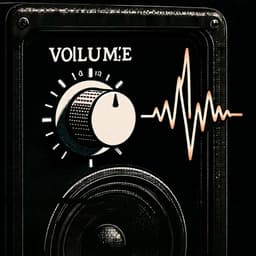I'm fine, thanks
in SpanishEstoy bien, gracias.
/ehs-TOY bee-EHN, GRAH-see-ahs/
This is the most standard and direct way to say "I'm fine, thanks." It's your go-to response that works in almost any situation, from a casual chat with a friend to a formal meeting with your boss.

Responding with 'Estoy bien, gracias' is a fundamental part of any friendly conversation in Spanish.
💬Other Ways to Say It
Bien, gracias.
/bee-EHN, GRAH-see-ahs/
A shorter, more common version of the primary phrase. It drops the 'Estoy' (I am) because it's already understood from the context.
Muy bien, gracias.
/MWEE bee-EHN, GRAH-see-ahs/
This means "Very well, thanks." It's a slightly more positive and enthusiastic response than just 'Bien'.
Todo bien, gracias.
/TOH-doh bee-EHN, GRAH-see-ahs/
Literally "Everything's good, thanks." This is an extremely common and friendly response, especially popular throughout Latin America.
Fenomenal, gracias.
/feh-noh-meh-NAHL, GRAH-see-ahs/
An enthusiastic response meaning "Phenomenal, thanks." It shows you're feeling fantastic and is more common in Spain.
No me puedo quejar.
/noh meh PWEH-doh keh-HAR/
This means "I can't complain." It's a humble and slightly humorous way to say that things are going well.
Aquí andamos.
/ah-KEE ahn-DAH-mohs/
A very colloquial phrase that translates roughly to "Hanging in there" or "Just getting by." It's a relaxed, non-committal way to say you're okay.
Más o menos.
/MAHS oh MEH-nohs/
The classic way to say "So-so" or "More or less." It's a neutral and honest response for when you're not feeling great, but not terrible either.
Regular.
/rreh-goo-LAHR/
Means "Okay" or "Alright," similar to "Más o menos" but perhaps a touch more neutral or even slightly negative. It indicates things are just average.
Tirando.
/tee-RAHN-doh/
A very Spanish expression that means something like "Getting by" or "Chugging along." It comes from the verb 'tirar' (to pull), suggesting you're pulling through.
🔑Key Words
Key Words to learn:
📊Quick Comparison
Here’s a quick guide to choosing the best response based on how you're feeling and the situation.
| Phrase | Formality | Best For | Avoid When |
|---|---|---|---|
| Estoy bien, gracias. | Neutral | Any situation. It's the safest, most universal option. | Never. It's always appropriate. |
| Todo bien, gracias. | Informal | Casual chats with friends and peers, especially in Latin America. | A very formal business meeting or when speaking to an elderly person you don't know. |
| Fenomenal, gracias. | Informal | Expressing genuine, high-energy enthusiasm, particularly in Spain. | You're feeling just okay, or in a serious or somber setting. |
| Más o menos. | Neutral | Giving an honest, 'so-so' answer when you don't want to pretend. | You want to keep the conversation light and positive, as it might invite follow-up questions. |
📈Difficulty Level
Fairly easy for English speakers. The 'gr' sound in 'gracias' and rolling the 'r' can be a small hurdle, but it's understandable even without a perfect roll.
The main difficulty is the 'ser vs. estar' distinction. Remembering to use 'estoy' instead of 'soy' is the key grammatical point for beginners.
Medium difficulty. The mechanics are easy, but knowing to always ask the question back, and understanding the different levels of honesty in responses, requires cultural awareness.
Key Challenges:
- Remembering to use 'Estoy' not 'Soy'
- Making it a habit to always ask '¿Y tú/usted?' in return
- Knowing which variation to use in different regions
💡Examples in Action
—Hola, Ana, ¿cómo estás? —Muy bien, gracias, ¿y tú?
—Hi, Ana, how are you? —Very well, thanks, and you?
—Buenos días, Señor Pérez. ¿Cómo está usted? —Estoy bien, gracias. Espero que usted también.
—Good morning, Mr. Pérez. How are you? —I'm fine, thank you. I hope you are too.
—¿Qué onda, güey? ¿Todo bien? —¡Todo bien! Aquí andamos, en la lucha.
—What's up, dude? All good? —All good! Just hanging in there, in the struggle.
—¿Qué tal el viaje? ¿Cansado? —No me puedo quejar, todo salió perfecto.
—How was the trip? Tired? —I can't complain, everything went perfectly.
🌍Cultural Context
The Mandatory Return Question
In English, you can sometimes get away with just saying "I'm fine, thanks." In the Spanish-speaking world, it's a strong social expectation to return the question. Always follow up with '¿Y tú?' (informal) or '¿Y usted?' (formal). Forgetting to do so can come across as abrupt or even a bit rude.
Honesty is More Common
While "I'm fine" is often an automatic, almost meaningless response in American English, Spanish speakers are generally more open to giving an honest, nuanced answer. Using phrases like 'Más o menos' (so-so) or 'Regular' (okay) is perfectly normal and shows you're comfortable being genuine.
'Todo Bien' Culture
In many parts of Latin America, '¿Todo bien?' has become a standard greeting, almost replacing '¿Cómo estás?'. The standard reply is a confident '¡Todo bien!'. It carries a positive, laid-back vibe that reflects a common cultural outlook.
❌ Common Pitfalls
Using 'Soy' instead of 'Estoy'
Mistake: "Soy bien, gracias."
Correction: Estoy bien, gracias.
Forgetting to Ask Back
Mistake: "A: '¿Cómo estás?' B: 'Bien, gracias.' (Conversation ends)"
Correction: A: '¿Cómo estás?' B: 'Bien, gracias. ¿Y tú?'
Using 'Bueno' for 'Well'
Mistake: "Estoy bueno, gracias."
Correction: Estoy bien, gracias.
💡Pro Tips
Match Their Formality
Listen to how someone asks you the question. If they use the formal '¿Cómo está usted?', you should respond and ask back with '¿Y usted?'. If they use the informal '¿Cómo estás?', reply with '¿Y tú?'.
Expand Your Vocabulary
While 'Estoy bien' is always correct, native speakers use a wide range of responses. Try incorporating 'Todo bien', 'No me quejo', or even 'Más o menos' into your vocabulary to sound more natural and expressive.
Add a Little Extra
To make your response more conversational, you can add a small detail. For example: 'Muy bien, gracias. Un poco cansado del trabajo, ¿y tú?' (Very well, thanks. A little tired from work, and you?). This helps turn a simple greeting into a real conversation.
🗺️Regional Variations
Spain
Spaniards often use more expressive and sometimes blunter phrases. 'Tirando' ('getting by') is a very common, almost default response that isn't negative, just realistic. 'Fenomenal' is also used with genuine enthusiasm.
Mexico
'¿Qué onda? / ¿Qué tal? ¿Todo bien?' is a very frequent greeting. The response 'Todo bien' is extremely common and versatile. 'Al cien' (at 100%) is a popular, positive slang term for saying you're great.
Argentina
'Todo bien' is king here, used both as a question and an answer. You'll often hear '¿Che, todo bien?'. 'Joya' (jewel) is a common slang term for 'great' or 'cool', and works as a response.
Caribbean (e.g., Puerto Rico, Cuba, Dominican Republic)
The vibe is often upbeat. Words like 'chévere' (cool/great) or 'nítido' (sharp/neat) are common positive responses. The plural 'Estamos bien' (We're fine) is also frequently used to speak for oneself.
💬What Comes Next?
After you say 'Estoy bien, gracias. ¿Y tú?'
Bien también, gracias por preguntar.
Good too, thanks for asking.
¡Qué bueno!
That's great!
You answer with 'Más o menos.'
¿Por qué? ¿Qué pasó?
Why? What happened?
Nada grave, solo un día largo.
Nothing serious, just a long day.
After the initial greeting is exchanged
Me alegro.
I'm glad.
¿Y qué me cuentas?
So, what's new with you?
🧠Memory Tricks
This classic rhyme helps you remember to use 'Estoy' (from estar) for temporary states like feelings ('I'm fine') instead of 'Soy' (from ser).
The sound is similar, and the meaning is connected. You are showing you are gracious by saying thanks.
🔄How It Differs from English
The biggest cultural difference is that "I'm fine, thanks" in Spanish is less of a formula and more of a genuine invitation to connect. The expectation to return the question ('¿Y tú?') is much stronger than in English. Furthermore, giving a less-than-positive answer like 'más o menos' is socially acceptable and common, whereas in English it can sometimes be seen as a conversation-stopper or a request for help.
False Friends & Common Confusions:
Why it's different: A direct translation, 'Soy bueno', is incorrect. 'Soy bueno' means 'I am a good person'. Saying 'Estoy bueno' can mean 'I am attractive/hot'. Both are very different from 'I am feeling well'.
Use instead: Always use 'Estoy bien' to talk about your current state of well-being.
🎯Your Learning Path
➡️ Learn Next:
How to ask 'How are you?'
This is the question that prompts the answer 'I'm fine, thanks.'
How to say 'And you?'
It's the essential follow-up to 'I'm fine, thanks' in any polite conversation.
How to say 'You're welcome'
This completes the politeness cycle, as it's the natural response to 'gracias'.
How to say 'My name is...'
After greetings, introducing yourself is the next logical step in a conversation.
✏️Test Your Knowledge
💡 Quick Quiz: I'm fine, thanks
Question 1 of 3
Your boss, whom you always speak to formally, asks you, 'Buenos días, ¿cómo está usted?'. What is the most appropriate response?
Frequently Asked Questions
What's the absolute most common way to say 'I'm fine, thanks'?
The shortest and most frequent version you'll hear in daily conversation is simply 'Bien, gracias.' The 'Estoy' (I am) is usually dropped because it's understood. If you want to be safe and clear as a beginner, 'Estoy bien, gracias' is perfect.
Is it rude if I forget to say '¿Y tú?' back?
It's not horribly rude, but it can be seen as a bit abrupt or self-centered, like you're not interested in the other person. Making a habit of always asking back is one of the easiest ways to sound more polite and fluent in Spanish.
What's the difference between 'Estoy bien' and 'Soy bien' again?
This is a key grammar point. 'Estoy bien' is correct; it uses the verb 'estar' for temporary states, like feelings. 'Soy bien' is incorrect. 'Soy' comes from 'ser,' which is for permanent characteristics. You are feeling well (estar), you aren't a well person (ser).
How do I say I'm NOT fine?
You can say 'No estoy bien' for 'I'm not well.' For less severe cases, 'Más o menos' (so-so), 'Regular' (okay/just alright), or even a simple 'No muy bien' (not very well) are common and perfectly acceptable.
Can I just say 'Bien' without 'gracias'?
Yes, in very quick or casual exchanges, people often just say 'Bien, ¿y tú?'. However, adding 'gracias' is more polite and is generally recommended. It shows appreciation for the person asking.
Is 'Todo bien' used in Spain?
While people in Spain will understand 'Todo bien' perfectly, it's much more characteristic of Latin American Spanish. In Spain, it's more common to hear 'Bien', 'Muy bien', or the colloquial 'Tirando'.
📚Continue Learning Spanish Phrases
Explore More Phrases in These Categories
Find similar phrases to expand your Spanish vocabulary:
Want to Learn More Spanish Phrases?
Browse our complete collection of Spanish phrases organized by situation, from basic greetings to advanced conversations. Perfect for travelers, students, and anyone learning Spanish.
View All Spanish Phrases →



